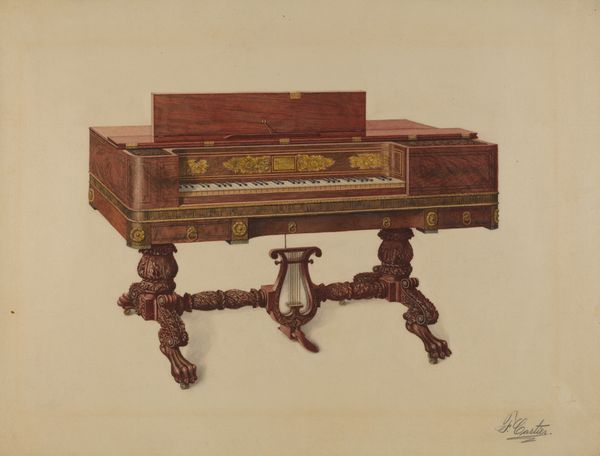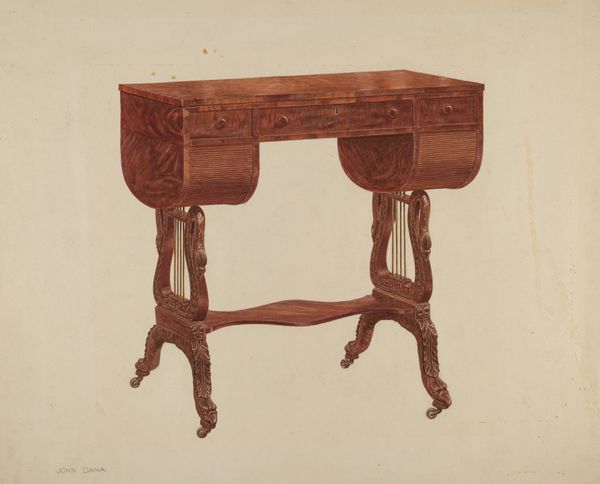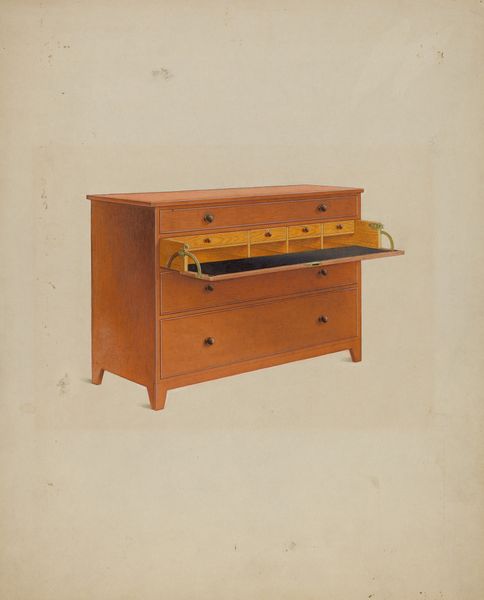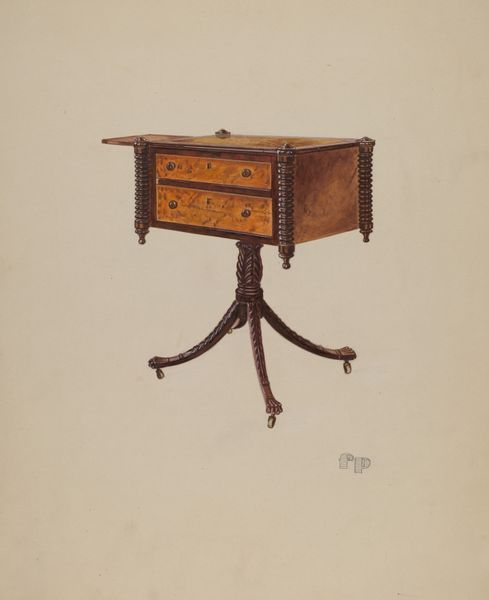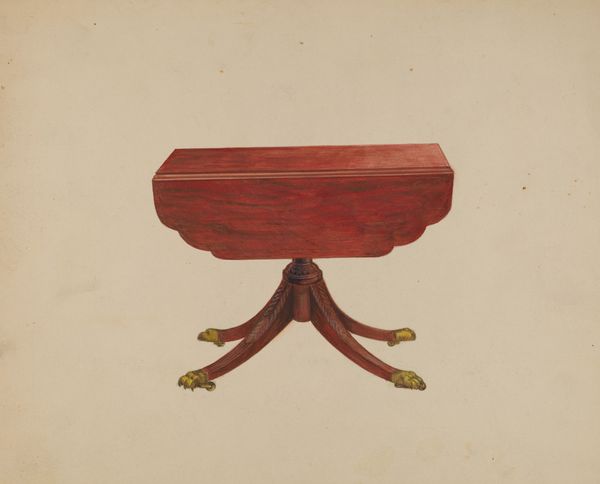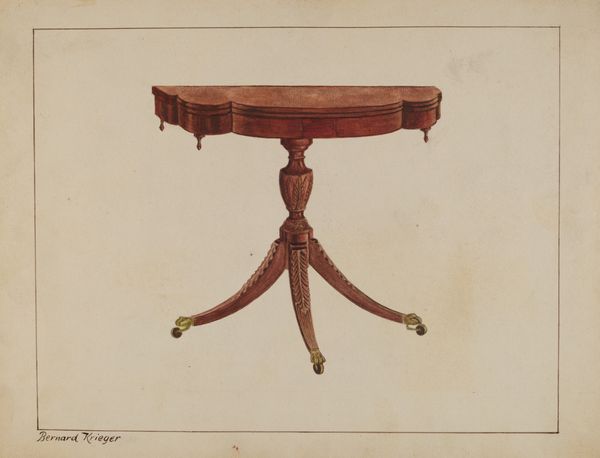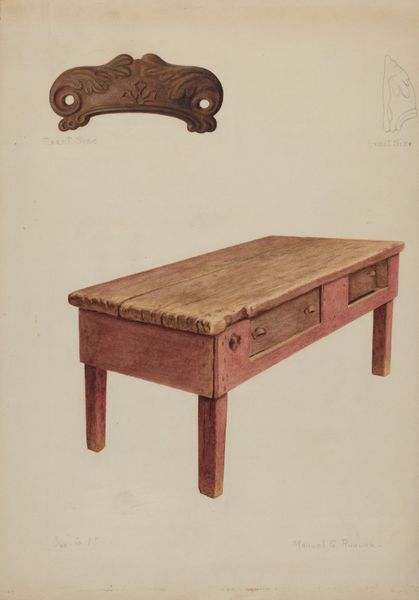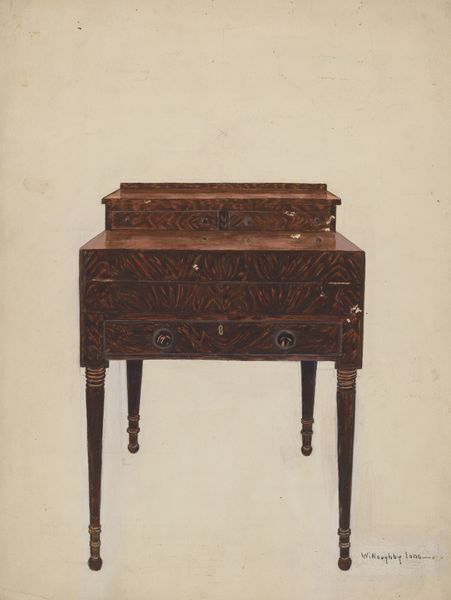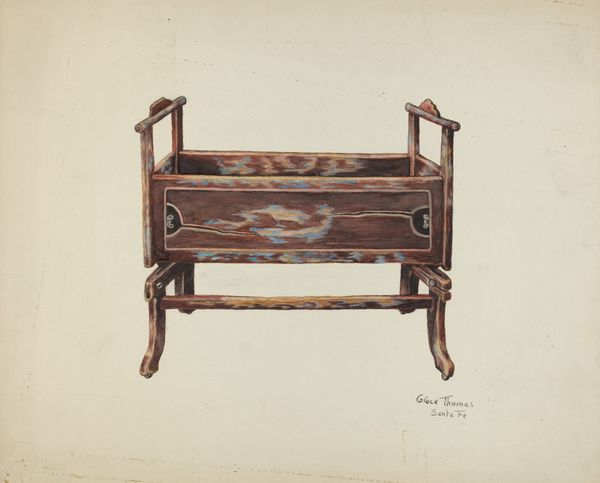
drawing, coloured-pencil, watercolor
#
drawing
#
coloured-pencil
#
water colours
#
watercolor
#
coloured pencil
#
decorative-art
Dimensions: overall: 36.5 x 44 cm (14 3/8 x 17 5/16 in.)
Copyright: National Gallery of Art: CC0 1.0
Editor: So, this is "Grand Piano," a watercolor and colored pencil drawing from around 1938, by Ray Price. The craftsmanship depicted is remarkable! The level of detail and care is apparent in every line. What draws your attention in this piece? Curator: For me, it’s the piece's connection to material culture during the Depression era. Note the decorative style, bordering on opulent, and its detailed execution via drawing, which simulates woodworking. Price is highlighting the artistry involved in furniture production, especially during a time of economic hardship where access to such luxury items might have been limited. It prompts us to consider questions of labor, materiality, and the social context of both production and potential consumption. How does that materiality impact your interpretation? Editor: I hadn't considered the impact of the Depression! I was only seeing it as a pretty, old drawing of a piano, you know? The color palette also reads differently now. Does the medium–colored pencil and watercolor – suggest something about its intended purpose or audience? Curator: Absolutely! Consider watercolor’s history as a portable and relatively inexpensive medium, and colored pencils as accessible art supplies. Ray Price using these could suggest it was either a preparatory drawing to communicate the visual qualities of this object without investing in its expensive manufacture. We must then consider its status, and if drawing is elevated as 'art', what does this tell us about art and labor in the period it was made. Editor: It's fascinating how looking at the materials and their social implications changes the whole viewing experience! I was stuck on aesthetic appeal, but the historical and economic context provides a deeper understanding. Curator: Precisely! By understanding how these factors intersect, we gain a richer and far more complex relationship with the work and its function within society. Editor: Well, this was incredibly helpful! Thanks for shining some light on that. Curator: My pleasure. Examining art this way allows us to examine broader cultural values and histories.
Comments
No comments
Be the first to comment and join the conversation on the ultimate creative platform.
